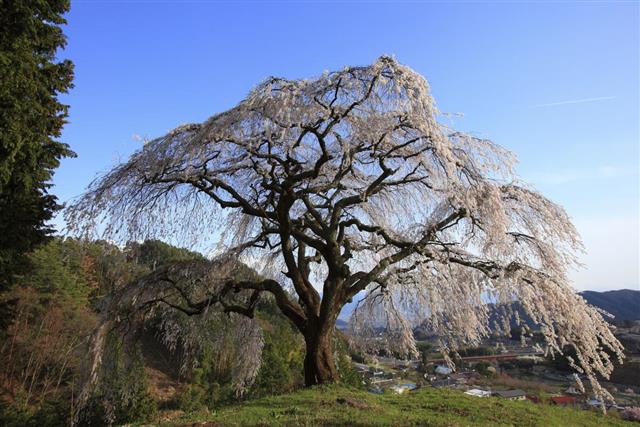
Weeping cherry trees are at their peak, when they bloom with a million white-pink flowers. This Gardenerdy article will guide you, right from buying and planting a weeping cherry, gardening it, to the instructions for caring for a full-grown tree.
Weeping cherry tree which is extremely popular for its blossoms known as Sakura, are originally from Japan, and have been praised in many Japanese poems. These trees are held in very high esteem, and during World War II, the Japanese fighter pilots painted the cherry tree on their airplanes. In Japan, there are festivals and flower viewings held, especially to display these trees. So, how did these marvelous trees come to America?
These trees, found in Japan, were introduced to America by David Fairchild. He was an employee of the Department of Agriculture, and introduced these beautiful trees in the early 1900s. As the trees flourished, they became popular, and more were imported to America. Some years later, the Japanese Embassy donated 2000 trees to United States, and today they can be seen in many regions in the US. The weeping cherry tree grows well in warmer climates. By following some care instructions, you can add it to your landscape design, and accentuate your landscapes with this tree.
General Information
The weeping cherry tree will grow to a circumference, which ranges anywhere between 20 – 40 feet. Hence, it is important that you plan a space for gardening which is big enough, to accommodate a full-grown weeping cherry. It grows in warmer climate, in zones 5 to 9. It is tolerant of many types of soil, but the pH should be between 6.5 to 7.5. It needs full sun, and adequate watering is required for the young trees. Over watering is not good for the mature weeping cherry.
Varieties
The most common variety of the weeping cherry planted in US is the Dwarf weeping cherry tree, many times known as Snow Fountain weeping cherry tree. This variety is ideal for small landscapes, and is the variety which has white flowers on pendulous branches. The large sized weeping cherry tree, which blooms in April every spring, has pink flowers, and grows to a big size. These trees need a lot of room while growing, and can become extremely high with a circumference of up to 40 feet. Make sure you design your landscaping plan, well before planting this tree on your landscape. The other two pretty varieties are the Okame Cherry and the Kwanzan Cherry. The Okame cherry is a graceful tree, and instead of developing branches that droop, it grows upright till 20 – 30 feet, and gets delicate pink flowers during spring. It makes an ideal choice for people who wish to avoid pruning. The Kwanzan cherry, is a stunning sight as it matures. In April there is blooming of large single or double pink flowers, and it has a habit of growing upright similar to the Okame Cherry.
Buying and Planting the Tree
You can buy the plant from an online supplier, or from a plant nursery near you. Make sure you buy a high quality plant, to prevent any future problems concerning the tree’s health. Plant it in a permeable container, and dig a hole bigger than the container. Form a layer of fertilizer before, and then place the container without disturbing any roots of the plant. In case, the soil is moist, lay down a layer of gravel and sandstones, and then place the plant.
Tree Care
The soil should be maintained, well-drained to prevent any tree disease related to its root. Keep fertilizing the tree lightly during early spring with an appropriate fertilizer. If you have the variety with the pendulous branches, then regular pruning is a must. Use sharp shears, and between each cut, smear some antibacterial solution. Pruning should be done at the end of summer to prevent any sap bleeding. Maintain a natural umbrella shape, while pruning for a natural look. To prevent any harm from mowing, you can apply a layer of well drained mulch.
Problems like pests or root diseases occur if the care instructions for this tree are not followed properly. So, care for your weeping cherry well, and enjoy a full, beautiful, white-pink bloomed tree in spring!






